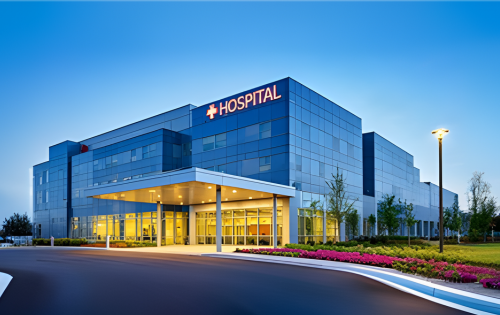
Tailoring Access Control to Meet Unique Business Needs
In today’s rapidly evolving digital landscape, businesses must prioritize the security of their assets and data. It is no longer enough to rely on traditional security measures alone; companies must invest in a tailored access control system that meets their unique business needs. At Pavion, we specialize in providing customized access control solutions that not only enhance security but also streamline business operations. Security is not a one size fits all product or industry and should not be treated as such.
Understanding the Importance of Customized Access Control
Access control plays a vital role in safeguarding a company’s physical and digital assets. It empowers organizations to control who has access to specific areas, networks, and information. However, a one-size-fits-all approach to access control can fall short when it comes to meeting the complex requirements of modern businesses.
When it comes to protecting sensitive information, ensuring compliance with industry regulations, and minimizing the risk of security breaches and data breaches, access control is not just about limiting entry to certain areas. It is a comprehensive system that encompasses various measures and protocols to maintain the integrity and confidentiality of valuable assets.
One of the key reasons why a one-size-fits-all approach doesn’t work is that every business operates differently. Each organization has its own unique systems, processes, and security concerns that need to be taken into account when implementing access control measures. Off-the-shelf solutions may not adequately address these specific needs, leaving businesses vulnerable to unauthorized access or excessive restrictions that impede productivity.
By adopting a tailored approach to access control, businesses can ensure that their security measures align with their specific requirements. This involves conducting a thorough assessment of the organization’s infrastructure, identifying potential vulnerabilities, and implementing customized solutions that address these vulnerabilities effectively.
Customized access control solutions can offer a range of benefits for businesses. Firstly, they provide enhanced security by allowing organizations to implement multi-factor authentication, biometric identification, and other advanced security measures that go beyond traditional keycard or password-based systems.
Secondly, customized access control solutions enable businesses to streamline their operations by integrating access control systems with other business processes. For example, access control can be seamlessly integrated with time and attendance systems, allowing for accurate tracking of employee hours and simplifying payroll processes.
Furthermore, customized access control solutions can help businesses achieve compliance with industry regulations and standards. Different industries have specific requirements when it comes to access control, such as the healthcare sector needing to comply with HIPAA regulations. Customized solutions can ensure that businesses meet these requirements and avoid costly penalties.
In conclusion, while access control is essential for any organization, a one-size-fits-all approach is not sufficient to address the diverse needs of modern businesses. By adopting a customized approach, businesses can enhance their security, streamline their operations, and achieve compliance with industry regulations. Investing in customized access control solutions is a proactive step towards protecting valuable assets and maintaining a secure environment.
Analyzing Your Business’s Specific Needs
Before designing a custom access control system, it is important to assess your business’s unique requirements. This involves identifying key business operations that need protection and assessing potential security risks.
When analyzing your business’s specific needs, it is crucial to take the time to thoroughly understand the various aspects of your organization. By doing so, you can ensure that your access control system is tailored to meet your specific requirements.
Identifying Key Business Operations
Take the time to identify the critical areas, departments, or assets that require access control. Consider physical spaces, such as server rooms, research labs, or executive offices, as well as digital resources, like databases, intellectual property, or customer data.
For physical spaces, it is important to consider the level of security required in each area. Server rooms, for example, may require stricter access control measures due to the sensitive nature of the data stored within. Research labs, on the other hand, may require limited access to protect ongoing experiments and intellectual property.
When it comes to digital resources, it is essential to identify the types of data that need protection. Databases containing customer information, for instance, may require stringent access control to prevent unauthorized access and potential data breaches. Intellectual property, such as trade secrets or proprietary algorithms, should also be safeguarded through appropriate access control measures.
Assessing Potential Security Risks
Conducting a comprehensive risk assessment is a crucial step in designing an effective access control system. This process involves identifying vulnerabilities and potential threats that could compromise the security of your business.
When assessing potential security risks, it is important to evaluate existing security measures. This includes reviewing the effectiveness of current access control systems, surveillance cameras, alarm systems, and any other security measures that are already in place.
In addition to evaluating existing security measures, it is important to determine the likelihood of unauthorized access. This can be done by considering factors such as the physical location of your business, the industry you operate in, and any previous security incidents that may have occurred.
Furthermore, assessing the potential impact of a breach is crucial in understanding the severity of security risks. Consider the potential financial losses, damage to reputation, and legal implications that could arise from unauthorized access to critical business operations or sensitive data.
By conducting a thorough risk assessment, you can gain a comprehensive understanding of the security risks your business faces. This knowledge will enable you to design an access control system that effectively mitigates these risks and protects your business’s operations and assets.
Designing a Tailored Access Control System
Once you have a clear understanding of your business’s specific needs, it is time to design a tailored access control system that aligns with your objectives and enhances security.
Designing a tailored access control system involves careful consideration of various factors to ensure optimal security and efficiency. It is not just about implementing a basic system; it requires a comprehensive approach that takes into account the unique requirements of your business.
One of the key aspects of designing a tailored access control system is choosing the right access control technologies. With advancements in technology, there is a wide range of options available. From traditional keycard systems to biometric readers and mobile-based access solutions, it is crucial to select the technologies that best fit your business’s requirements.
When choosing access control technologies, it is important to consider factors such as the size and layout of your premises, the number of employees and visitors, and the level of security needed. For example, if you have a large facility with a high volume of people coming and going, a biometric reader system that uses fingerprints or facial recognition may be more suitable than a traditional keycard system.
Integrating access control with other systems is another important consideration in the design process. An effective access control system should seamlessly integrate with existing systems and processes. By leveraging the power of integration, businesses can achieve improved operational efficiency, enhanced data accuracy, and centralized control.
Integration can be achieved through various means, such as integrating access control with time and attendance systems, visitor management systems, and CCTV systems. This integration allows for a more streamlined and efficient workflow, as well as better monitoring and reporting capabilities.
Furthermore, integrating access control with other systems can provide additional layers of security. For example, by integrating access control with CCTV systems, you can have a visual record of who enters and exits your premises, enhancing security and enabling easier investigation in case of any incidents.
In conclusion, designing a tailored access control system involves careful consideration of various factors, including choosing the right access control technologies and integrating them with other systems. By taking a comprehensive approach and considering the unique requirements of your business, you can design an access control system that enhances security, improves operational efficiency, and provides centralized control.
Implementing Your Custom Access Control System
Implementing a custom access control system requires careful planning and execution to ensure a smooth transition.
Training Staff on New Access Protocols
As the access control landscape evolves, it is crucial to provide comprehensive training to employees. This includes educating them on the new access protocols, emphasizing the importance of security, and ensuring they understand their role in maintaining a secure environment.
Monitoring and Adjusting Access Control Over Time
An effective access control system is not a set-it-and-forget-it solution. It requires regular monitoring, evaluation, and adjustment. This includes reviewing access logs, analyzing patterns, and making necessary modifications based on changes in business operations or security needs.
The Future of Tailored Access Control
As technology continues to advance, so too will access control systems. It is important for businesses to stay abreast of emerging trends and prepare for future needs.
Emerging Trends in Access Control
New advancements, such as cloud-based access control, artificial intelligence, and Internet of Things (IoT) integration, are shaping the future of access control. These technologies offer enhanced security, improved user experience, and greater flexibility for businesses.
Preparing for Future Access Control Needs
Anticipating and preparing for future access control needs can give businesses a competitive edge. This involves staying informed about industry developments, engaging with access control experts, and continually evaluating and adapting your security strategies.
In conclusion, when it comes to access control, Pavion understands the need for tailored solutions. By recognizing the unique business needs of each client and designing custom access control systems, we help businesses stay ahead of potential threats while simultaneously improving operational efficiency. As access control technology continues to evolve, Pavion remains committed to providing top-notch services that protect businesses and their valuable assets. Contact us today to discuss how we can tailor an access control solution to meet your specific needs.
Secure Your Future with Pavion
Don’t let generic solutions dictate your security posture. Pavion is ready to help you navigate the complexities of access control with a system that’s crafted to your business’s unique needs. Our commitment to innovation and service excellence ensures that your safety, security, and communication needs are not just met, but transformed. Take the first step towards a more secure and efficient operation. Get a Free System Assessment today and let us connect and protect your world.


